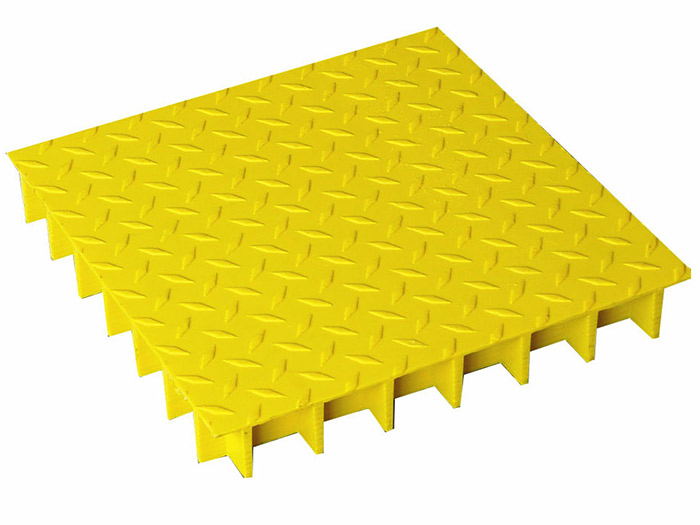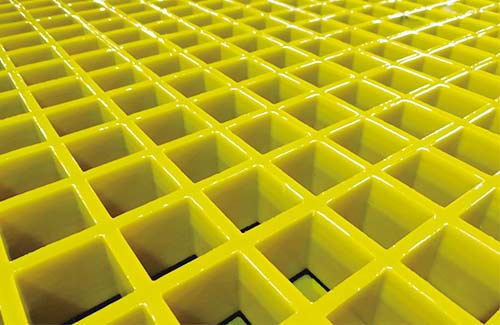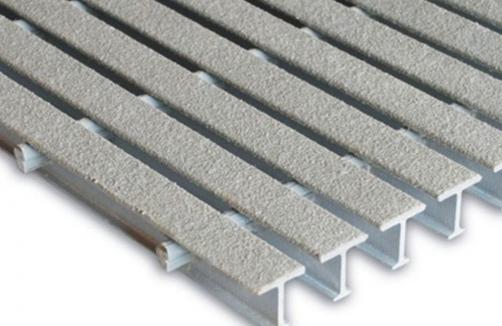Griglia fenolica resistente alle alte temperature: La soluzione definitiva per gli ambienti estremi
In ambienti estremi, dove le temperature salgono vertiginosamente e i materiali convenzionali falliscono, qual è la soluzione migliore per un'infrastruttura affidabile? La risposta sta nel grigliato fenolico resistente alle alte temperature, un materiale progettato per resistere alle condizioni più difficili mantenendo l'integrità strutturale. Ma cosa rende il grigliato fenolico così superiore? Come si colloca rispetto ai materiali tradizionali? E quali sono le applicazioni principali in cui brilla? Questo articolo esplora queste e altre domande, fornendo preziose indicazioni sul perché il grigliato fenolico sia la scelta migliore per gli ambienti estremi.
Cosa rende speciale il grigliato fenolico?

Il grigliato fenolico è un materiale composito costituito da strati di resina fenolica e tessuto di vetro. Questa composizione unica gli conferisce un'eccezionale resistenza al calore, rendendolo capace di sopportare temperature fino a 537°C (1000°F). A differenza dell'acciaio o dell'alluminio, che possono deformarsi o fondersi in presenza di calore estremo, il grigliato fenolico rimane stabile e durevole. Ma quali sono i vantaggi specifici di questo materiale?
Resistenza al calore
Uno dei principali vantaggi del grigliato fenolico è la sua capacità di resistere alle alte temperature senza degradarsi. Questo lo rende ideale per ambienti come impianti chimici, impianti di produzione di energia e cucine industriali. La resistenza al calore del materiale garantisce il mantenimento dell'integrità strutturale anche nelle condizioni più difficili.
Isolamento elettrico
Un'altra caratteristica fondamentale del grigliato fenolico sono le sue proprietà di isolamento elettrico. Non conducendo elettricità, è sicuro da usare in ambienti in cui sono presenti rischi elettrici. Questo aspetto è particolarmente importante nelle strutture in cui vengono manipolati gas o liquidi infiammabili. La combinazione di resistenza al calore e isolamento elettrico rende il grigliato fenolico una scelta versatile per un'ampia gamma di applicazioni.
Resistenza alla corrosione
Il grigliato fenolico è anche altamente resistente alla corrosione, a differenza dei materiali tradizionali come l'acciaio, che possono arrugginire e indebolirsi nel tempo. Questo lo rende una scelta eccellente per gli ambienti in cui sono presenti umidità e sostanze chimiche. Sia che venga utilizzato in ambienti marini o in impianti industriali, il grigliato fenolico è in grado di resistere alla corrosione senza perdere la sua forza.
Come si colloca il grigliato fenolico rispetto ai materiali tradizionali?
Quando si tratta di scegliere il materiale giusto per ambienti estremi, è essenziale confrontare il grigliato fenolico con i materiali tradizionali, come l'acciaio e l'alluminio. Quali sono le differenze principali e perché il grigliato fenolico potrebbe essere la scelta migliore?
Peso e forza
Il grigliato fenolico è molto più leggero di quello in acciaio, ma ha una resistenza paragonabile. Questo lo rende più facile da maneggiare e installare, riducendo i costi di manodopera e i rischi per la sicurezza. Inoltre, la sua leggerezza ne consente l'uso in applicazioni in cui i carichi pesanti potrebbero altrimenti costituire un problema.
Costo-efficacia
Sebbene il grigliato fenolico possa avere un costo iniziale più elevato rispetto ai materiali tradizionali, la sua durata a lungo termine e i bassi requisiti di manutenzione lo rendono una soluzione conveniente. Il grigliato fenolico non richiede verniciatura o rivestimento, il che può far risparmiare denaro nel tempo. Inoltre, grazie alla sua resistenza al calore e alla corrosione, può durare più a lungo dei materiali tradizionali, riducendo i costi di sostituzione.
Impatto ambientale
Il grigliato fenolico è anche più ecologico rispetto ai materiali tradizionali. È realizzato con materiali riciclabili e non contiene sostanze chimiche nocive. Inoltre, la sua durata riduce gli sprechi, poiché non deve essere sostituito con la stessa frequenza di altri materiali.
Applicazioni chiave del reticolo fenolico
Il grigliato fenolico è utilizzato in una varietà di settori e applicazioni in cui è essenziale la resistenza alle alte temperature. Alcuni degli usi più comuni includono:
Impianti chimici
Gli impianti chimici richiedono spesso materiali in grado di resistere a temperature estreme e a sostanze corrosive. La resistenza al calore e alla corrosione del grigliato fenolico lo rende una scelta ideale per passerelle, piattaforme e soppalchi in queste strutture.
Impianti di generazione di energia
Le centrali elettriche, in particolare quelle che generano elettricità attraverso processi di combustione o nucleari, richiedono materiali in grado di gestire le alte temperature. Il grigliato fenolico viene utilizzato per la pavimentazione e le passerelle di queste strutture, garantendo sicurezza e durata.
Cucine industriali
Le cucine industriali hanno spesso fonti di calore elevate, come forni e friggitrici. La resistenza al calore del grigliato fenolico lo rende adatto all'uso in questi ambienti, fornendo una superficie sicura e stabile per i lavoratori.
Ambienti marini
In ambiente marino, il grigliato fenolico viene utilizzato per banchine, moli e passerelle. La sua resistenza alla corrosione fa sì che possa sopportare l'acqua salata e l'umidità senza deteriorarsi.
Condividere intuizioni e buone pratiche
Quando si implementa il reticolo fenolico in ambienti estremi, è essenziale seguire le migliori pratiche per garantire prestazioni ottimali. Ecco alcuni spunti e suggerimenti:
Installazione corretta
Una corretta installazione è fondamentale affinché il grigliato fenolico funzioni come previsto. Deve essere installato su una superficie piana e stabile per evitare un'usura irregolare. Inoltre, tutti gli elementi di fissaggio e i supporti devono essere serrati secondo le specifiche del produttore.
Manutenzione regolare
Sebbene il grigliato fenolico richieda una manutenzione minima, è essenziale effettuare ispezioni regolari per individuare eventuali segni di usura o danni. Questo può aiutare a prevenire problemi più significativi e a prolungare la vita del grigliato.
Considerazioni sulla sicurezza
Il grigliato fenolico è stato progettato per essere utilizzato in ambienti estremi, ma è importante seguire tutte le linee guida per la sicurezza. Ciò include l'uso di calzature e attrezzature adeguate quando si lavora su o intorno al grigliato.
Conclusione
Il grigliato fenolico resistente alle alte temperature è la soluzione definitiva per gli ambienti estremi. La sua resistenza al calore, l'isolamento elettrico e la resistenza alla corrosione lo rendono una scelta superiore per un'ampia gamma di applicazioni. Confrontandolo con i materiali tradizionali e comprendendone i vantaggi principali, i responsabili delle strutture possono prendere decisioni informate sulle loro esigenze infrastrutturali. Il grigliato fenolico non solo garantisce durata e sicurezza, ma offre anche risparmi a lungo termine e vantaggi ambientali. Sia che venga utilizzato in impianti chimici, di produzione di energia o in cucine industriali, il grigliato fenolico è un materiale affidabile e versatile, in grado di resistere alle condizioni più difficili.







